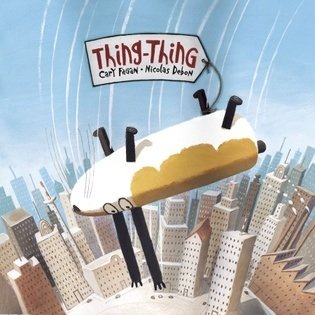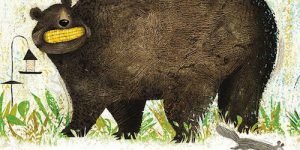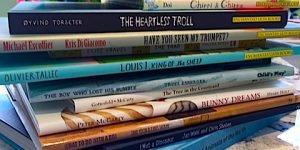The thing about Thing-Thing is that hesitation is not always the best policy, which contradicts everything I said in my previous blog about mindless accumulation. I first identified Thing-Thing as a jewel worthy of plucking about a year ago. The title, in particular, appealed to me, as did the art, but for some reason, I hesitated. Thing-Thing was a one of one in the bookstore, and it stayed that way for six months, until the day it disappeared from the shelf. The day, of course, when I finally realized it was time to bring Thing-Thing home. Presumably, the book had been sent back to the publisher, but maybe someone less diffident than me had picked it up. I hope so. Books that are returned to the publisher eventually get sent back on giant lots with other ‘remainder’ stock, only this time, the sad history of their early rejection is slashed across their bottoms with a big black marker. I was able to retrieve the book from the publisher before it suffered a completely undeserved fate. Thing-Thing is now my Thing-Thing, and it is most assuredly one of my favourite things.
It begins with a spoiled brat named Archibald Crimp (Dickens would approve) throwing a hissy fit, declaring that he is ‘not getting out of this bed‘ (Naomi Campbell would approve) until his parents bring him a present better than all the electronic games, racing cars, and robots littering the floor of the hotel room in the BIG CITY, where the family is staying for the little snot’s birthday. The exasperated, but pathologically indulgent parents oblige, and the father heads over to the nearest toy store. There, on a top shelf, he finds Thing-Thing, who was ‘not quite a bunny rabbit, but not quite a dog either, nor a bear, or cat for that matter.’ Dad brings the toy home and Little Lord Archibald promptly throws it out the window. End of story? No. Thing-Thing’s slow descent to the pavement is where the story actually begins.










